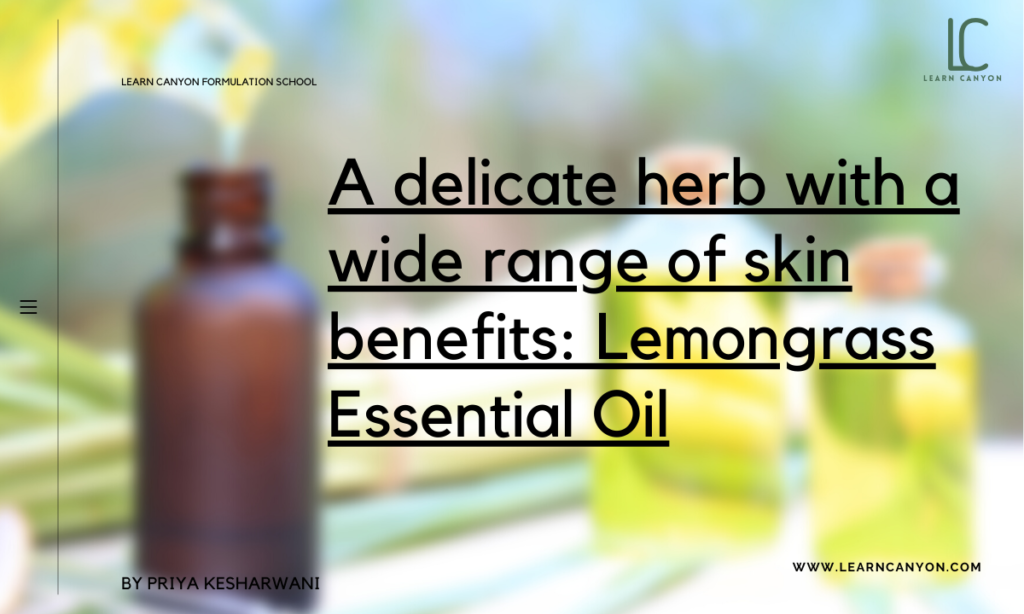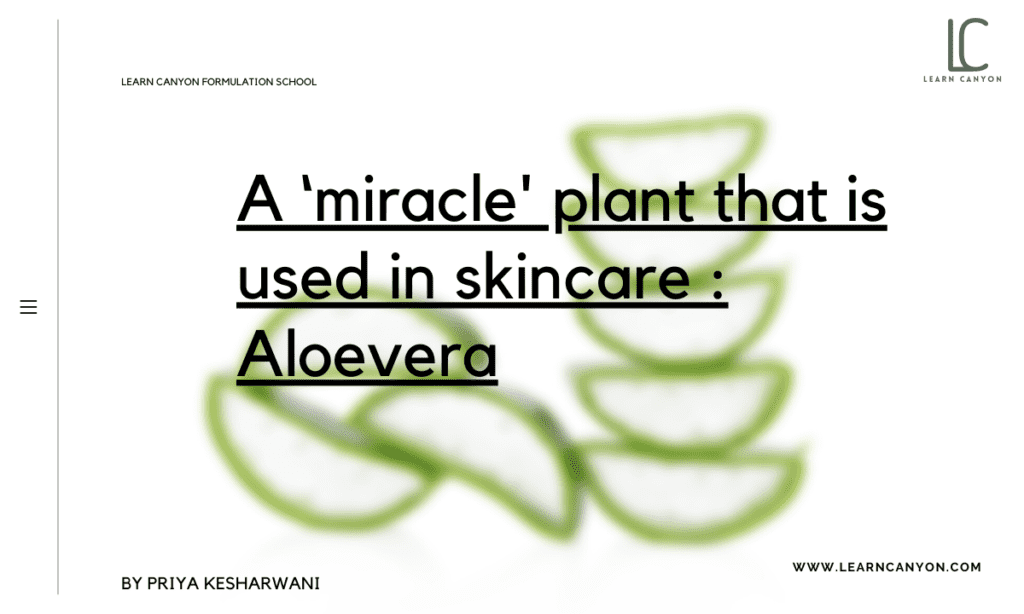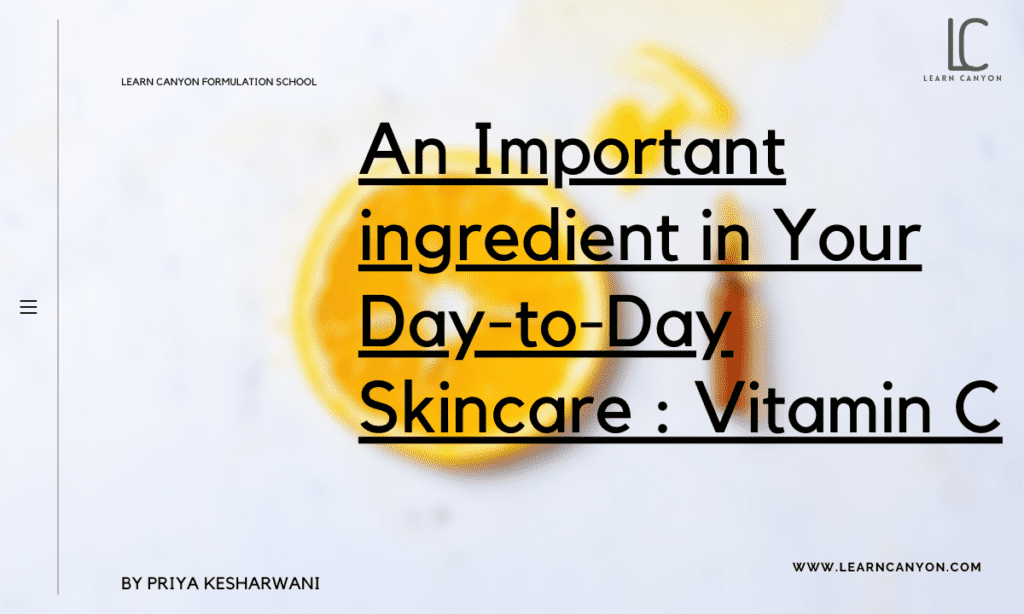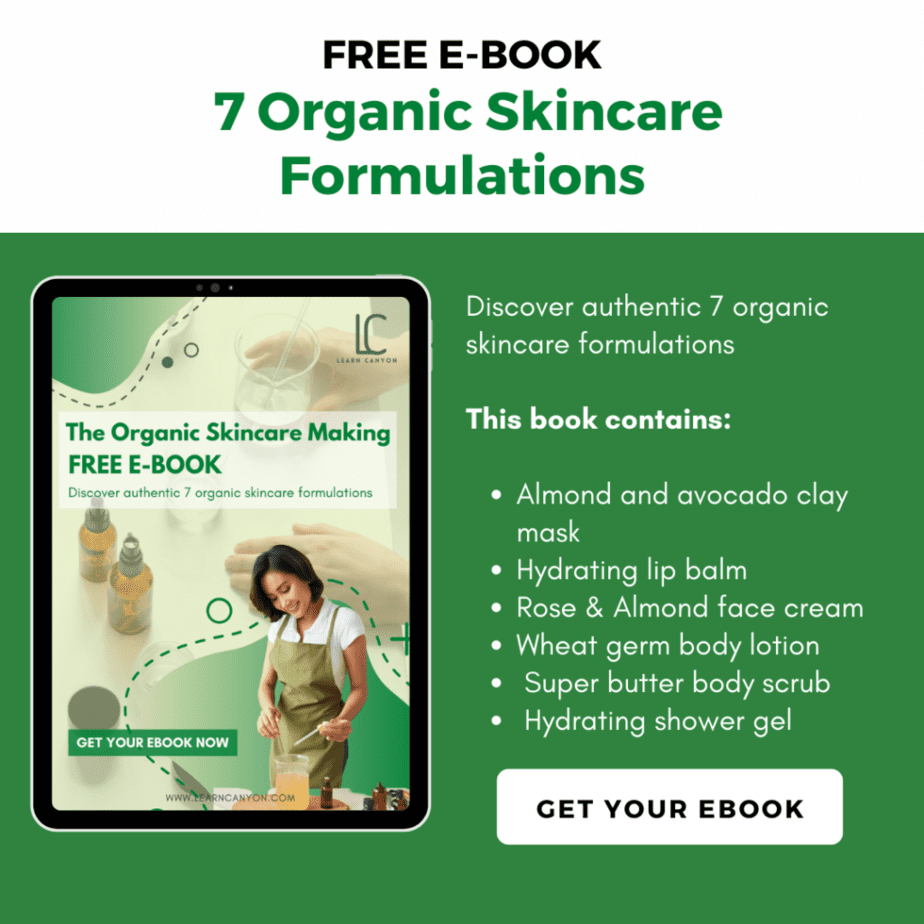
Aloe Vera extract

Aloe Vera is a ‘miracle' plant that is used in skincare.
We can’t forget about one of the most well-known and longest-used natural components for skin health: ALOE VERA, as we become more conscious of the benefits of clean beauty and natural skincare products. For those unfamiliar, Aloe Vera is a cactus plant with thick leaves that flourishes in dry areas.
Many individuals use the gelatinous substance within the leaves of the Aloe plant to care for their skin. The first documented mention of Aloe Vera being used for medical and dermatological purposes dates from 2200 BC!
What is Aloe Vera?
This extract is made from the leaves of the Aloe Vera plant, which has a long history as a healing plant. Aloe Vera has been used as a moisturiser, a therapy for wounds, burns, and other topical injuries, and as an oral medicine for a range of maladies over the years.
| What is it? | Aloe vera (Aloe barbadensis) is a cactus-like plant with medicinal and cosmetic characteristics that grows in hot, dry areas. |
|---|---|
| INCI | Aloe barbadensis (Aloe Vera) |
| Appearance | Clear to light Cream, Slightly Viscous Fluid |
| Texture | Soft in texture |
| Recommended Usage | 1.0-10.0% |
| Solubility | Water soluble |
| Melting point | NA |
| Boiling point | NA |
| pH | 3.5 - 5.5 |
| Aroma | Typical, Very Low aroma. |
| Why do we include it in formulations? | It is rich in antioxidants, enzymes, and vitamins A and C, as well as being anti-inflammatory. It can aid in the healing of burns, acne, and dry skin. |
| How to work with it? | Extracts are used during the cooling down phase of the formulation. Using the formula, determine the solubility of miscible. |
| Applications | Aloe vera juice, which is hydrating, may help to lessen the frequency and look of acne. Aloe vera is high in antioxidants and vitamins, which may benefit your skin. |
| Absorption rate | Fast |
| Strength | Easily accessible and extremely useful |
| Weaknesses | Skin allergies, redness in the eyes, skin rashes, irritation, and burning sensations are all possible reactions. |
| Substitution | Almond oil and coconut oil. |
| How to store it? | At a temperature of 50°-77°F (10°-25°C), protected from direct light and humidity. |
| Shelf life | When properly stored and packed, aloe vera has a shelf life of 12 months. |
| Type of ingredient | Skin soother |
|---|---|
| Main benefits | The skin is soothed, calmed, and hydrated. |
| Who should use it | Anyone who wants to treat burns, such as sunburn and windburn, and hydrate their skin in general. |
| How often can you use it? | It should be applied two to three times each day. |
| Works well with | Nussbaum recommends combining it with anti-inflammatory substances to boost the relaxing effects. |
| Doesn't work with | Must avoid using aloe Vera products that contain alcohol, as this will negate the hydrating and soothing qualities of the aloe, as well as combining it with chemical exfoliants, as this will aggravate any stinging or irritation. |
| How to use | Extracts are used during the cooling down phase of the formulation. |
Mechanisms of action
Aloe Vera gel provides cooling and anti-inflammatory effects. As a result, it is one of the most natural sunburn or burnt skin treatments. Applying this gel provides a protective layer for the skin as well as aids in moisture retention.
It is high in antioxidants and minerals, which help the body repair faster. Salicylic acid is found naturally in aloe vera. Salicylic acid is a mild exfoliator that eliminates dead skin cells, unclogs pores, and helps to prevent acne.
Benefits of Aloe Vera
Aloe contains several minerals, amino acids, and phytosterols, as well as vitamins A, C, D, and E. This is what gives it its well-known healing, relaxing, and hydrating effects. Aloe also contains enzymes like bradykinase, which aid to reduce inflammation. The interior layer of an Aloe Vera leaf is 99.5 percent water, which is why it’s such a great moisturiser!
If you include Aloe Vera in your skincare routine, you might gain a number of advantages. Let’s see how Aloe Vera can benefit your skin:
- Hydration
To keep supple and youthful, your skin needs to be hydrated. Every skincare routine should include some form of moisturising. You should begin utilising Aloe Vera if you want to hydrate your skin while also ensuring that it retains water. It is a good moisturiser as well as a moisture retainer. Aloe Vera is high in water and can help hydrate your skin; it also contains molecules known as ‘mucopolysaccharides,’ which aid to retain moisture trapped in your skin. Aloe Vera has been shown in studies to aid in the healing of the skin’s outermost barrier. During the cold and dry months, this can keep your skin hydrated.
- Anti-Aging
Although ageing is inevitable, it does not mean you have to live with dry skin and wrinkles. Wrinkles grow more visible as the skin loses its hydration. Aloe Vera for skin care helps keep your skin looking young by keeping it hydrated! Aloe also aids in the production of hyaluronic acid, which keeps your skin supple.
- Blemishes on Acne
Aloe Vera has a crucial component called salicylic acid, which is widely used to treat acne. Aloe Vera is beneficial to acne sufferers since it has antimicrobial and anti-inflammatory qualities. Salicylic acids are also present in the formula, which can help prevent acne breakouts.
- Sunburns
Sunburns are extremely prevalent and can be extremely painful. Sunburned skin benefits from aloe vera’s soothing and hydrating characteristics. It can also aid with inflammation and itchiness. Aloe also contains important phytosterols that aid in the formation of a barrier to prevent trans-epidermal water loss (TEWL). This is crucial after an accident because burnt skin lacks the same protective barrier functions as healthy skin.
Side effects of Aloe Vera
Aloe Vera, like any other product, might cause an adverse reaction, therefore Nussbaum advises testing it first before putting it all over. She goes on to say that if you have a sensitivity to it, you may experience itching or slight burning, as well as a rash and hives, in which case you should cease using it right once.
How to use it in formulation?
Aloe Vera is a fantastic natural component to include in your skincare routine. Aloe Vera is a water-soluble component that can be used in toners, foams, and emulsions made with water. During the cooling phase of the formulation, extracts are employed. Calculate the solubility of miscible water using the formula.
Works well with other ingredients
Nussbaum advocates combining it with anti-inflammatory substances to boost the soothing effects.



